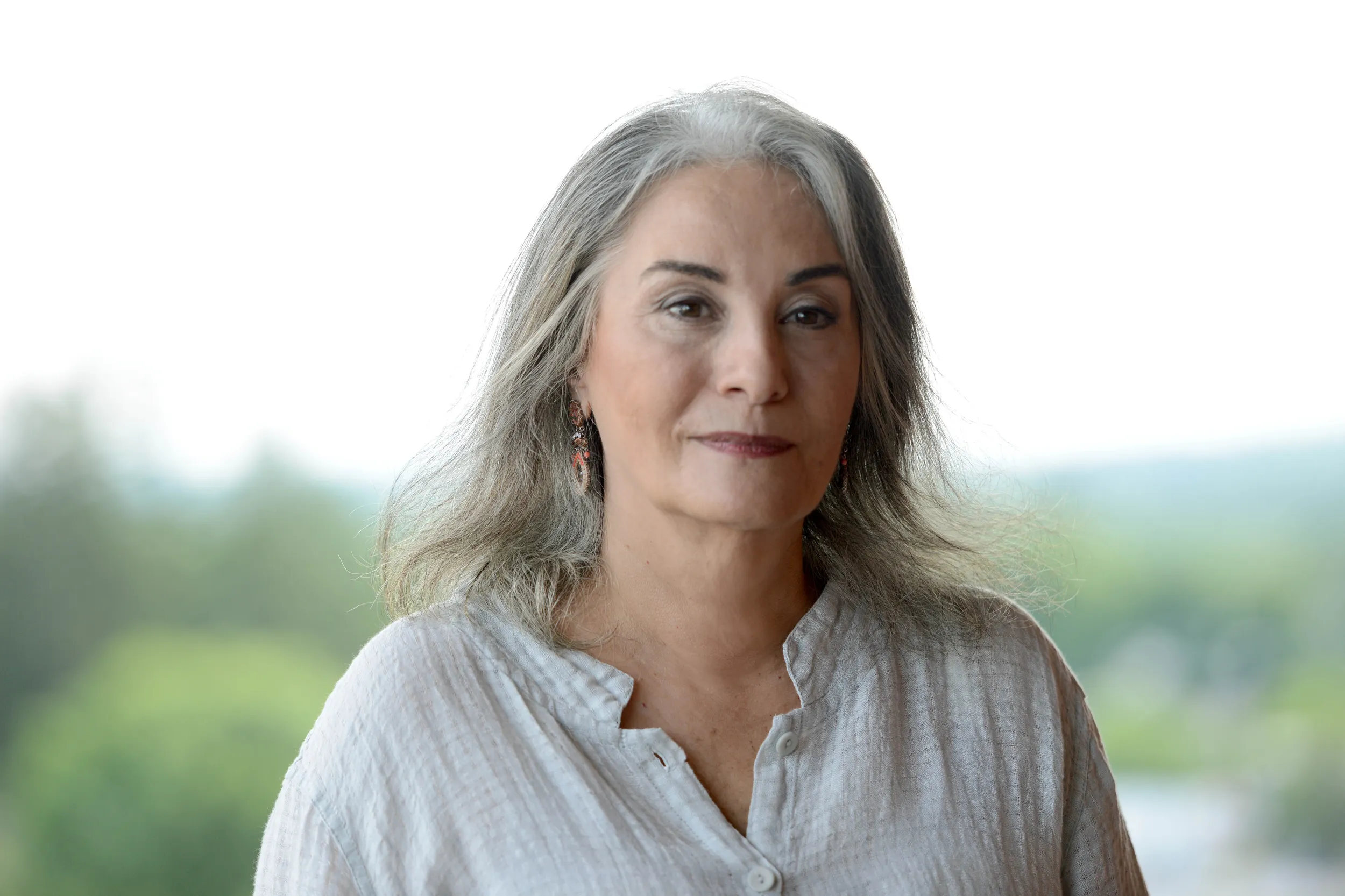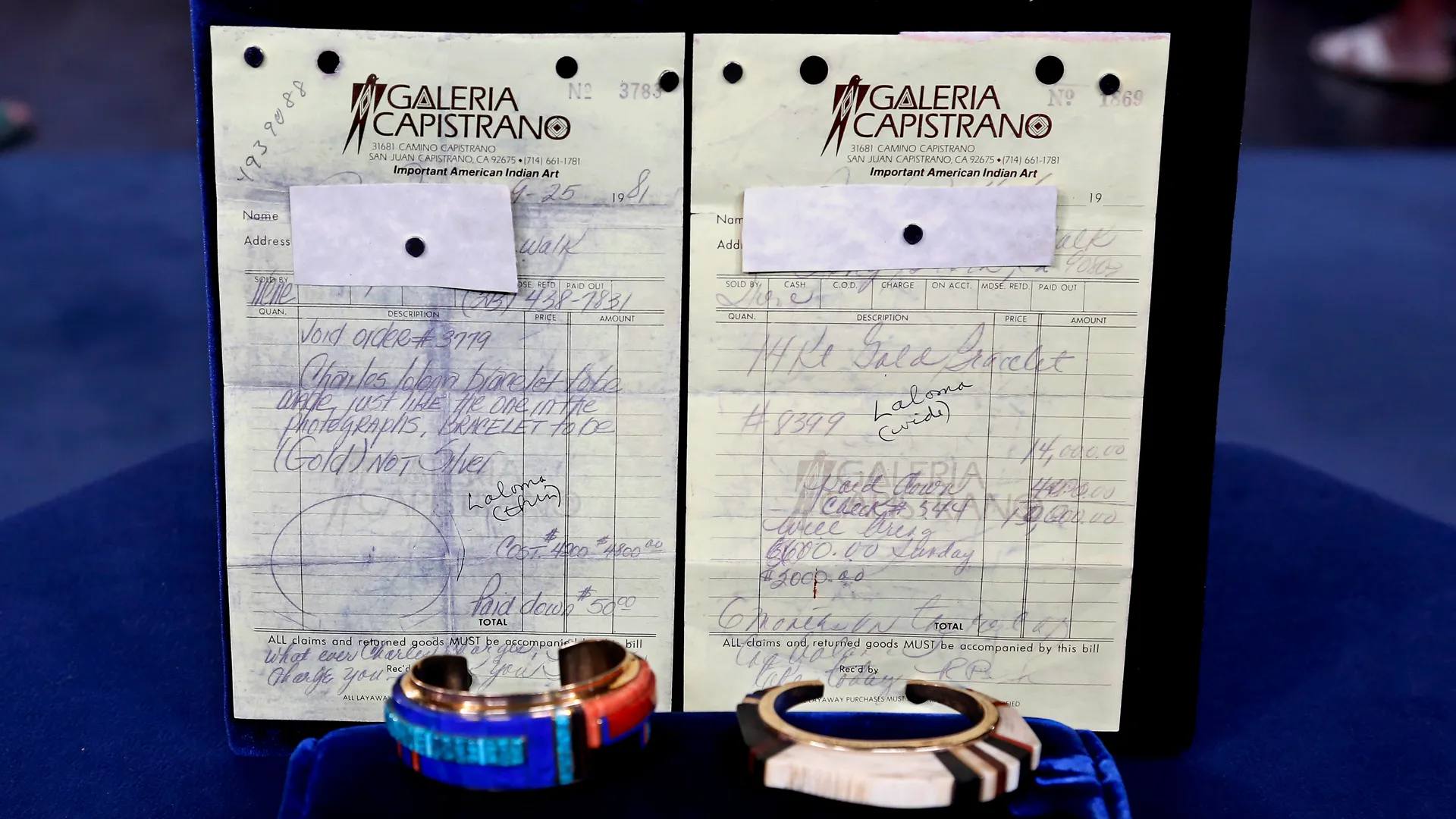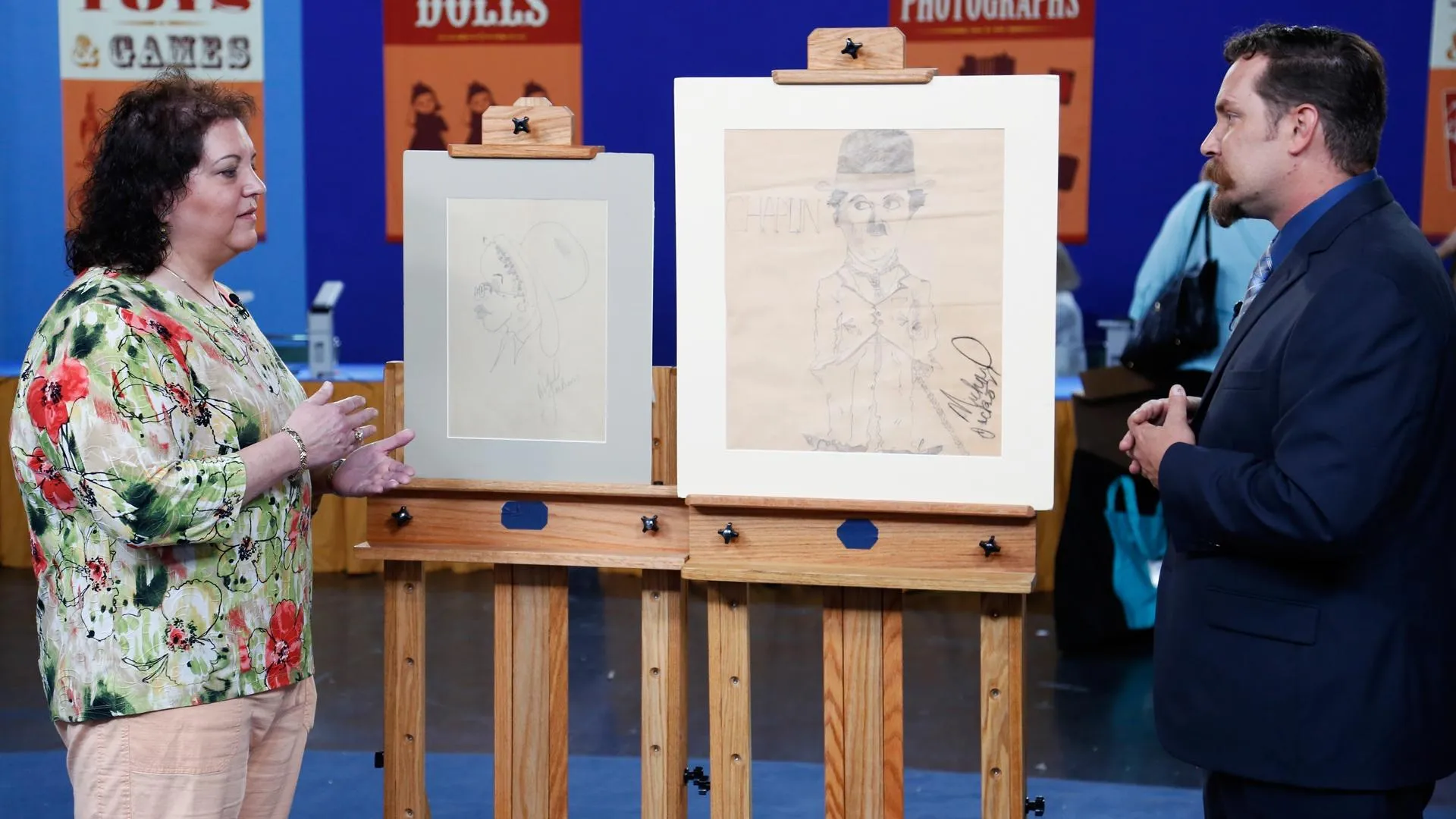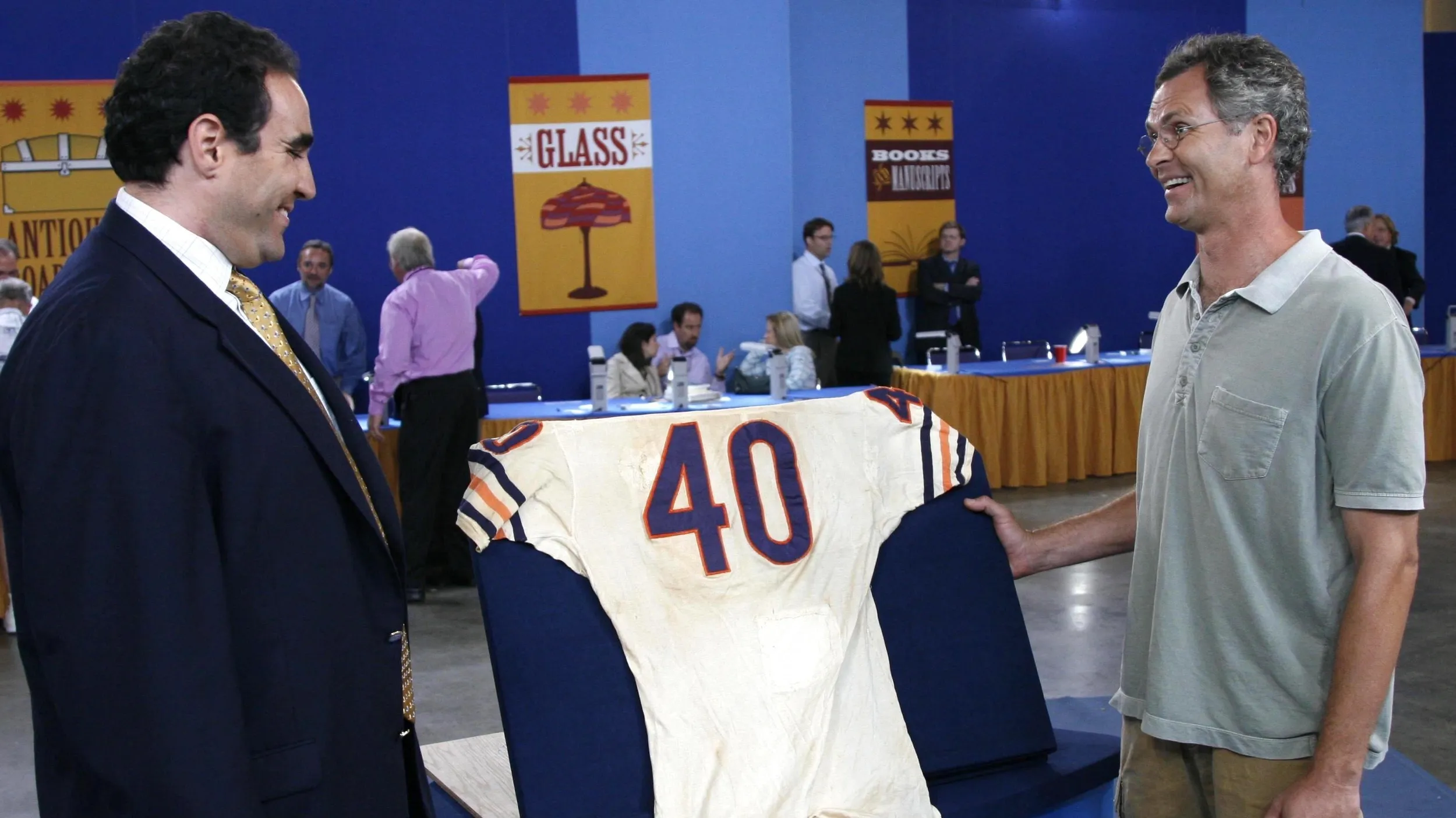GUEST: I just love jewelry and went down south to the Galeria Capistrano with my friend one day, and saw the small bracelet, and loved it, so I bought it. And I really loved this one, but I had to bring my husband back to insist that I buy it, and he did. (laughs)
APPRAISER: So you acquired them at the same time?
GUEST: About a week apart, yes.
APPRAISER: And that was in what year?
GUEST: 1981
APPRAISER: Had you ever met the artist that made these bracelets?
GUEST: He was having a show.
APPRAISER: So he was actually in the...
GUEST: He was there.
APPRAISER: ...in the gallery.
GUEST: For that show.
APPRAISER: And so you met him?
GUEST: Yes.
APPRAISER: And purchased these at that time?
GUEST: Well, he had this in silver. And I wanted it in gold, so they made it in gold for me.
APPRAISER: Did anything remain with you about the artist himself?
GUEST: Well, he was very Hollywood, you know, with the big ponytail and all. He made bracelets for all the movie stars. He was... he'd gone Hollywood. (laughs)
APPRAISER: He'd gone Hollywood. The artist we're talking about is Charles Loloma. And he was a remarkable personality, and he looked like a rock star.
GUEST: He was.
APPRAISER: He was a beautiful young man. He was, uh, Hopi ancestry. He was from the Third Mesa. He was born in 1921. He passed early in 1991. But he was working between 1950 and the mid-'80s. And when he initially started making jewelry, he tried to enter it into the intertribal ceremonial art shows. He was turned away three times, because they said his work was very nice, but it was not Indian.
GUEST: Yeah, too ornate.
APPRAISER: Because he was stepping away from the traditional in a way that's just breathtaking. Have you ever had these appraised?
GUEST: No.
APPRAISER: What was your decision to bring them here today?
GUEST: Because I knew he was famous, and he'd passed away, and they'd probably appreciated. (laughs): And they were small-- I had to bring them.
APPRAISER: There you go, there's a good reason. Because of Charles Loloma's popularity and the prices that he achieves, there's a lot of counterfeits on the market. People have to have the knowledge. These speak very loudly as originals, even if you did not have the receipts. These pieces on today's marketplace, in a auction setting-- for this particular one, the smaller one, I think we're conservative in saying it would sell for about $28,000 on today's market.
GUEST: Wow-- oh, my goodness.
APPRAISER: And the other piece, probably in the $40,000 marketplace.
GUEST: Oh, that's interesting.
APPRAISER: I know that pieces have sold in retail shops for as much as $80,000.
GUEST: (laughs)













